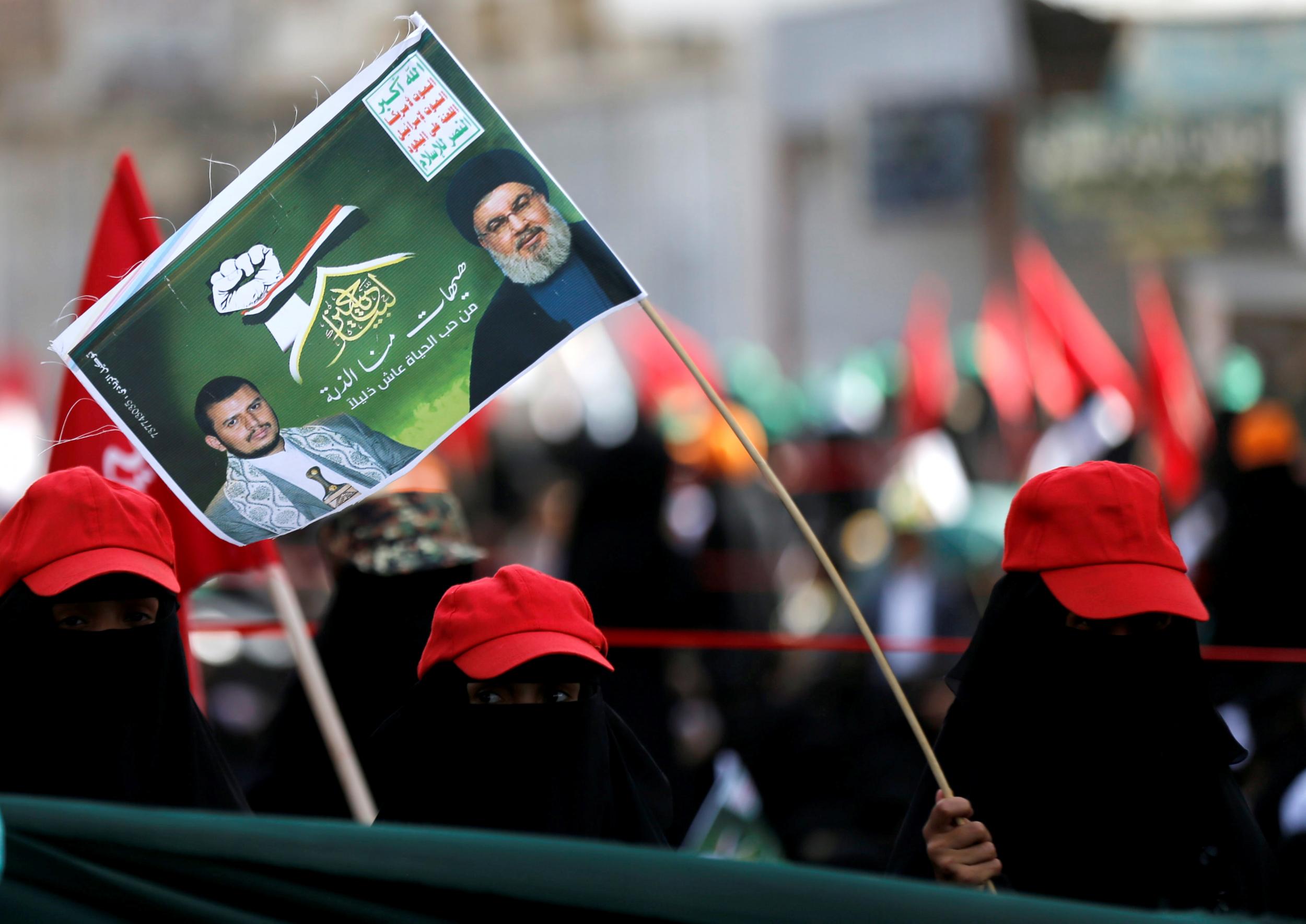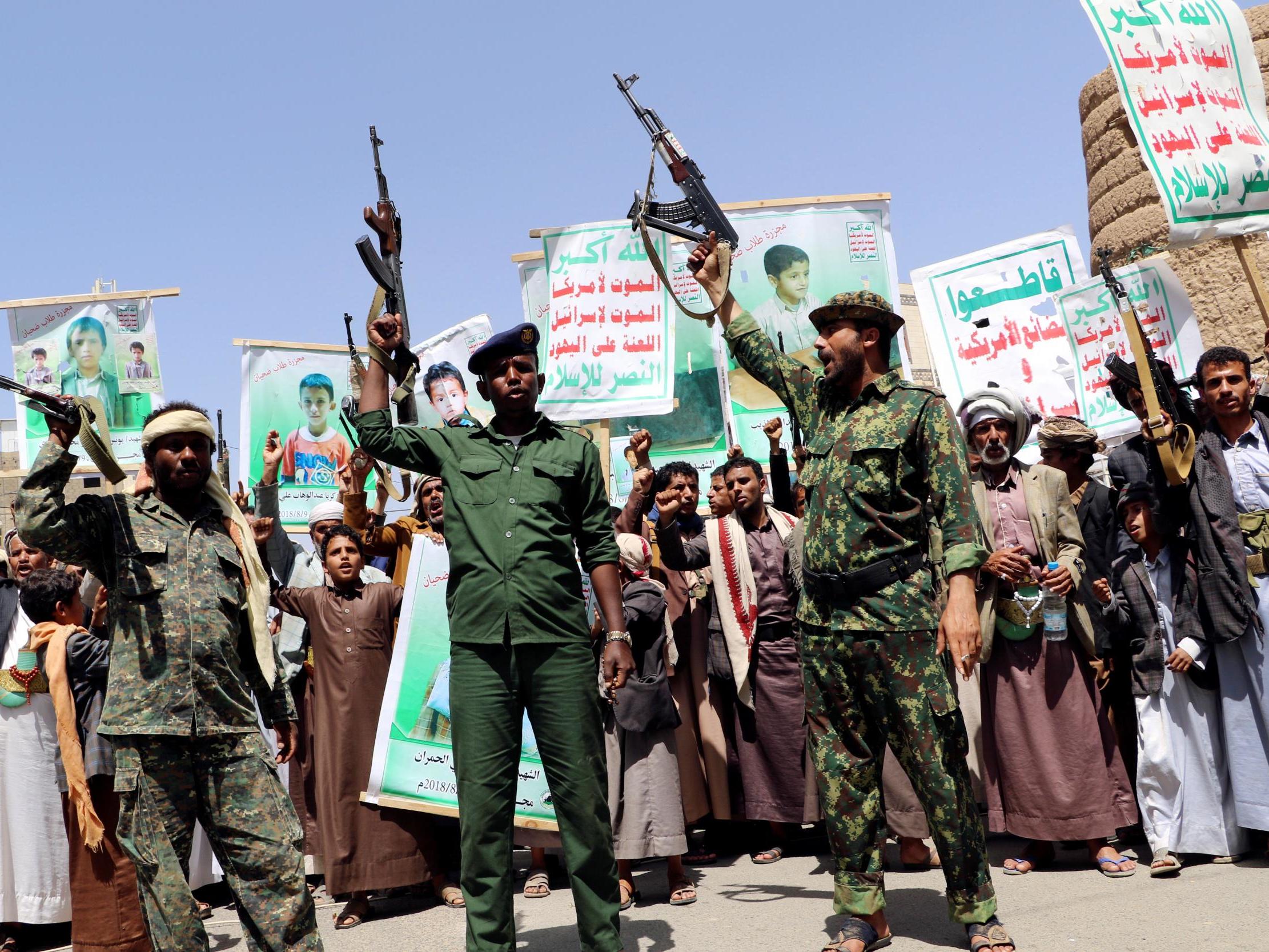Yemen war: Who are the Houthis and why is Saudi Arabia fighting them?
Everything you need to know about the Shia rebel group and the war in Yemen

Your support helps us to tell the story
From reproductive rights to climate change to Big Tech, The Independent is on the ground when the story is developing. Whether it's investigating the financials of Elon Musk's pro-Trump PAC or producing our latest documentary, 'The A Word', which shines a light on the American women fighting for reproductive rights, we know how important it is to parse out the facts from the messaging.
At such a critical moment in US history, we need reporters on the ground. Your donation allows us to keep sending journalists to speak to both sides of the story.
The Independent is trusted by Americans across the entire political spectrum. And unlike many other quality news outlets, we choose not to lock Americans out of our reporting and analysis with paywalls. We believe quality journalism should be available to everyone, paid for by those who can afford it.
Your support makes all the difference.The Houthis, a Shia religious-political movement in Yemen, swept into control of the country at the start of 2015 by ousting recognised president Abedrabbo Mansour Hadi.
Saudi Arabia and its Gulf allies launched a bombing campaign in March 2015 to reinstate their ally Hadi – and three and half years later the war is dragging on with no end in sight.
More than 23 million people, two-thirds of Yemen’s population, now rely on aid to survive and 13 million could die from famine, according to the United Nations.
The current battleground is over the strategic Red Sea city of Hodeidah, home to one of Yemen’s main ports through which more than 70 per cent of the country’s food and medical supplies enter.
UN-brokered talks which were supposed to take place by the end of the month have now been postponed until the end of the year.
Who are the Houthis?
The name is taken from the group’s founder, Hussein Badreddin al-Houthi, a prominent and influential north Yemen cleric and former member of parliament. The group, which was created in the 1990s, is officially known as Ansar Allah, or supporters of God, and is affiliated with the Zaydi sect of Shia Islam.
The doctrines and beliefs of the Zaydiyyah, which takes its name from Zayd bin Ali, the great-grandson of Ali, the Prophet Mohammed’s cousin, are significantly different from the Shiites who dominate Iran, though Iran is a major ally of the group. Instead experts say Zaydi beliefs are closer to Sunni Islam.
The Houthis really gained prominence in the early 2000s with a revival of the Zaydi sect, which its supporters feared was being eroded by then-president Ali Abdullah Salah, a leader they regarded as a being corrupt and too close to Saudi Arabia and the United States.
The tipping point came with the American invasion of Iraq in 2003, which radicalised the movement.
That same year the Houthis’ slogan became “God is great, death to the US, death to Israel, curse the Jews, and victory for Islam”. They later changed their name to Ansar Allah.
Alexander Weissenburger, a researcher at the Austrian Academy of Sciences, said it was at first unclear how strongly opposed to the Yemeni government Hussein wanted to be.
“His speeches focused on US and Israeli force, he even apparently wrote a letter to Salah declaring his allegiance,” Weissenburger said.
But everything changed when Saleh launched a series of military campaigns against the Houthis after 2003.
Hussein and several aides were eventually killed by government forces in 2004 and so the leadership of the movement passed to Hussein’s younger half-brother, Abdul-Malik al-Houthi, who remains the head today.
When did they become so opposed to the government?
Between 2004 and 2010, there were six different rounds of war between the Houthis and government forces.
By the time the Arab Spring rolled through the region, the Houthis found themselves fighting alongside other regime opponents, including their traditional enemies the Muslim Brotherhood, against Saleh’s administration.

But even after Saleh was toppled the Houthis remained in opposition to the new authorities, after Abedrabbo Mansour Hadi, a Sunni from the south, was appointed president.
A National Dialogue Conference, created to address the future of Yemen after Saleh, saw the unpopular president press ahead with the creation of a federal structure for Yemen. The six provinces would have split Sa’ada, the Houthi heartland, from nearby Jawf and Hajjah provinces meaning the Houthis would have lost their access to the sea and to swathes of their supporters.
They allied with their old foe, the former president Saleh, in what Adam Baron, a visiting fellow at ECFR, calls a “temporary alignment of interest”. Backed by Salah, who still had support from sections of the presidential guard and the army, the movement easily swept through the country.
Sanaa fell to the Houthi-led alliance in January 2015 just as King Salman took the throne in Saudi Arabia. Large parts of the rest of Yemen quickly followed.
The Saudis and their staunchest ally, the United Arab Emirates, launched a bombing campaign in March to reinstate Hadi, who had been forced to flee the country, and the war began
Late in November 2017 Saleh signalled he would be interested in swapping sides again and joining the government forces. He was killed by the Houthis just a few days later.
Right now the war continues to rage, devastating the impoverished country.

The United Nations has accused both the Gulf coalition and the Houthis of being responsible for the massive humanitarian crisis and of committing possible war crimes.
Whereas the Saudi coalition has been criticised for devastating airstrikes and its land, sea and air blockade, the Houthis have faced a fierce backlash for their battlefield tactics. In an August report the UN highlighted their siege on the government-held province of Taiz and the fact that they have shelled and shot at civilians. The report also said there was evidence of widespread arbitrary detention, and torture. The Houthis have separately been accused of withholding aid.
How big are the Houthis?
No one truly knows, but experts estimate they have anywhere between 1,000 and 10,000 hardcore fighters. They also have tribal forces that have been semi-recruited under duress swelling their numbers into the tens of thousands.
They are also heavily armed: when they took over Sanaa they took everything the Yemeni military had. They have also made significant sums of money from taxes and imports since wresting control of the country.
What’s their relationship with Iran?
Despite their religious differences, the Houthis and Iran are very close. Iran is believed to have armed the Houthis as well as to have provided technical assistance. After the Houthis swept control of Yemen they did briefly open direct air traffic between Sanaa and Tehran which promised cheap oil deals.
In June the United Nations released a report saying that parts of missiles the Houthis fired at Saudi Arabia in 2017 had components manufactured in Iran, though experts were unable to determine if the technology or parts had actually been transferred from Iran.

Who is the leader?
Little is known about any of the Houthi leaders as they do not give interviews. Abdul Malik al-Houthi, who is believed to be aged between 35 and 40, is the current head and said to be religious, less politically inclined and studious.
Alexander Weissenburger says he is the outward spiritual leader, but it is unclear how much influence he has internally. His cousin Mohamed Ali al-Houthis is believed to be the real political leader of the group.
The Houthi family are still at the heart of the movement; all the top political and military positions are staffed by members of the family.
There is no incentive for either side to surrender
So, what is next for them?
There is little hope that the peace talks the UN hopes to restart at the end of the year will produce a meaningful agreement.
Weissenburger said that the Houthis are currently preparing for a fierce house-to-house battle inside Hodeidah.
They have apparently withdrawn their artillery to the mountains behind the city so they can shell it.
The fear now is that a stalemate develops, with neither side able to move from their positions.
“There is no incentive for either side to surrender,” Weissenburger said.
Join our commenting forum
Join thought-provoking conversations, follow other Independent readers and see their replies
Comments